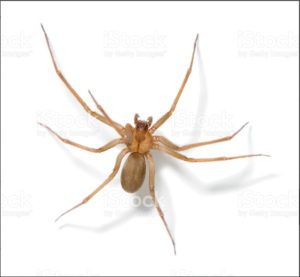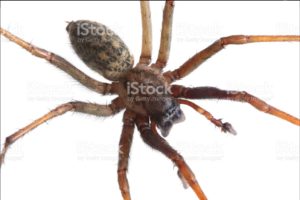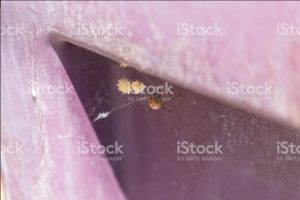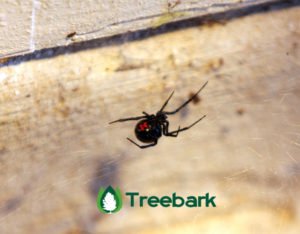Southern California and the Los Angeles area is home to many different species of spider, and unfortunately, sometimes they find homes on our own property. From common house spiders to the deadly and poisonous black widows, homes in Orange County and nearby areas are full of unwelcome visitors. It is up to homeowners whether to rid their homes of spiders or to rub elbows with their eight-legged, hairy friends, but before making such a decision, it may be useful to look at the risks involved. This is the Treebark Termite and Pest Control guide to the 5 most common spiders found in the Southern California home, and the risk of keeping them around. Here are the 5 Most Common Spiders:
1. Brown recluse
Most brown recluse spiders are light brown with little or no markings. Others may have an orange tint or violin-shaped markings down their backs. The best way to identify a brown recluse spider is the number of eyes. Most spiders have eight eyes, just like they have eight legs, but brown recluses only have six eyes.
While it is very rare for a brown recluse to bite a human, the consequences are very serious. As the name implies, brown recluses mostly keep to themselves, only known to bite people in self-defense. In the case that they do occur, brown recluse bites require immediate medical attention. Brown recluses are best removed from the house in order to avoid danger.

5 Most Common Spiders – Brown Recluse
2. Hobo spider
A hobo spider is brown or orange with black shapes down its back and pedipalps shaped like boxing gloves. A hobo spider is best identified by its funnel-shaped web, found in quiet parts of the house such as unused cabinets and storage rooms.
Bites from hobo spiders are rare but may be serious. While red and swollen at first, a hobo spider bite will appear healed after a few hours. The problems, if they appear, will be more subtle: nausea, fatigue, vision problems, and other less noticeable symptoms. As diagnosis may be difficult carried out at home, it is better to keep the home hobo spider-free.

3. Southern house spider
Male southern house spiders are light brown, while females are black. Males are frequently larger than females. While they do not have a very distinctive appearance, southern house spiders can be told apart due to their hairy bodies.
Southern house spiders are not dangerous, and only need to be removed if they are considered a nuisance.
4. Brown widow
A brown widow has a light brown abdomen decorated with colorful eye-shaped markings. It has brown-gel-like legs with black stripes. Like the black widow, it has a distinctive hourglass shape at the base of its abdomen.
While painful, a brown widow spider bite is not very dangerous, with only one verified case that required hospitalization. At the same time, their choice of hiding places leaves them mostly in the open and more likely to interact with people than more reclusive spiders. Homeowners with brown recluse infestations may see the spiders throughout the day, creating an uneasy feeling that they may choose to remove. Learn more about brown widow spiders here.

5. Black widow
Female black widows are black with a distinctive red hourglass shape on their abdomen. Males are slightly lighter, either brown or gray, and may or may not have a light-colored hourglass shape on their own abdomens.
A bite from a female black widow is very serious. Black widows stay in warm, dark, dry, and undisturbed areas, and have little risk of interacting with people, but may do so in self-defense or if the human disturbs their home. Due to the dangers of a potential bite, it is advisable to remove the threat.

a black widow spider in it’s web showing the red hourglass on it’s body
If you have concerns that your home may be infested by spiders or wish for their removal, consider calling , with locations throughout the Orange County and Los Angeles area. Our friendly staff will gladly help to answer all of your questions.
